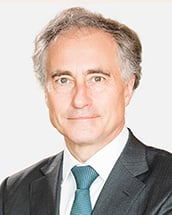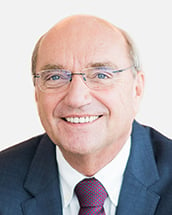The legal recognition of a type of fuel via the introduction of a legal definition and certification framework is a defining step in establishing a market for such fuels.
Renewable hydrogen took this step when it was officially recognized and supported at EU level by the 2018 recast of the Renewable Energy Directive (“RED II”), joining biofuels and biogases, at least for what concerns its uses in the transport sector. The European Commission’s reform proposal of RED II – as part of the Fit for 55 Package of July 2021 – recognizes the uses of renewable hydrogen in industry and other sectors, finalizing its full recognition. However, until now, there was no recognition of the certification of low-carbon hydrogen, gases or fuels, no official rules to organize it and no comprehensive proposals to do so in the Fit for 55 Package.1
Therefore, it is highly significant for the future EU and global hydrogen market that the European Commission finally proposed to recognize the role of low-carbon fuels in its Hydrogen and Decarbonised Gas Package of December 2021.2 This contribution analyses the new definitions and certification framework tabled in the European Commission’s proposals to determine their likely impact on the future hydrogen economy.
Definitions
The Gas Directive reform proposal defines low-carbon hydrogen, gases and fuels as follows:
- Low-carbon hydrogen is defined as “hydrogen, the energy content of which is derived from non-renewable sources, which meets a greenhouse gas emission reduction threshold of 70%”.
- Low-carbon fuels are defined as “recycled carbon fuels as defined in Article 2 of Directive (EU) 2018/2001, low-carbon hydrogen and synthetic gaseous and liquid fuels, the energy content of which is derived from low-carbon hydrogen, which meets the greenhouse gas emission reduction threshold of 70%”.
In other words, low-carbon fuels cover three types of substance.
Firstly, it covers the Renewable Energy Directive’s so-called “recycled carbon fuels“ that meet the 70% greenhouse gas emission reduction threshold.
Secondly, it covers low-carbon hydrogen in itself.
Thirdly, it covers both gaseous and liquid fuels that are synthetic and made out of low-carbon hydrogen, as well as meeting, in themselves, the 70% greenhouse gas emission reduction threshold. For this third case, the 70% threshold applies equally to the hydrogen used as an input to the synthetic fuel and to the output fuel itself.
Low-carbon gases are defined as “the part of gaseous fuels in recycled carbon fuels as defined in Article 2, point (35) of Directive (EU) 2018/2001, low-carbon hydrogen and synthetic gaseous fuels, the energy content of which is derived from low-carbon hydrogen, which meets the greenhouse gas emission reduction threshold of 70%”.
In other words, low-carbon gases are all low-carbon fuels that are in gaseous form, with the exception of low-carbon hydrogen itself.
The 70% greenhouse gas emission reduction threshold has thus been made universally applicable to define low-carbon hydrogen, gases and fuels. Note, however, that this threshold may become progressively more demanding. Indeed, although this is not provided for in the legal text, Recital 9 of the Gas Directive reform proposal states that this threshold “should become more stringent for hydrogen produced in installations starting operations from 1 January 2031 to take into account technological developments and better stimulate the dynamic progress towards the reduction of greenhouse gas emissions”. Although this may be reasonable from a climate perspective, the associated uncertainty could potentially have a disincentive effect on investment in low-carbon fuels production.
The precise methodology for assessing the greenhouse gas emissions savings of low-carbon fuels (i.e., how to “meet” the 70% reduction threshold) is not provided by the current legislative proposal. Instead, the proposal provides that the European Commission should adopt it via a Delegated Act by 31 December 2024.3 However, it should be based on a life-cycle approach,4 which will presumably give rise to controversies on the various highly technical but crucial questions regarding the precise parameters of the life-cycle approach. From a procedural point of view, this is similar to the methodology for renewable hydrogen, which must also be adopted by a Delegated Act5 and is still pending. However, there is no guarantee that the methodology applicable to the calculation of greenhouse gas emissions reduction will be the same for renewable and low-carbon gases or fuels.
Beyond the issue of the methodology, these definitions also raise two important issues.
Firstly, these definitions of low-carbon hydrogen, gases and fuels are not entirely consistent with the definition of low-carbon fuels outlined in the European Commission’s proposal for the Energy Tax Directive, or with the criteria applicable to define “sustainable” hydrogen or hydrogen-based fuels in the EU taxonomy.
Indeed, their requirements for hydrogen or other fuels to qualify as “sustainable” or “low-carbon” are different from those of the Hydrogen and Decarbonised Gas Package. Although the differences in the definitions are subtle, this suggests that there would be certain types of hydrogen or other fuels that would be “low-carbon” for network purposes, but not for the purposes of taxation or sustainable finance and corporate disclosure. This would create friction in an emerging market, which should probably be avoided.
Secondly, these definitions do not clarify the status of all categories of hydrogen, such as hydrogen made from the pyrolysis of methane using renewable electricity, where part of the feedstock is biological in origin. This is because they do not provide any definition for potential “zero-carbon” or “negative-carbon” hydrogen, and because they do not clarify the status of hydrogen or hydrogen-based fuels whose energy content is partially derived from renewable sources and partially derived from non-renewable sources.
Certification
The new certification framework for low-carbon fuels has been established in a way that is essentially identical to the one currently foreseen for renewable fuels under the Renewable Energy Directive.
This means that the certification of low-carbon fuels will rely on a mass-balance approach,6 according to either voluntary schemes recognized at national or EU level or national certification schemes.
In other words, low-carbon hydrogen and fuels will be certified using a “track and trace” certification method that allows different fuels to be mixed in batches, similar to those applicable to biofuels. However, it will not be similar to the trade of guarantees or origin (GOOs) in the electricity sector, where the GOOs can be traded wholly separately from the electricity.
Low-carbon fuels will also be tracked in the upcoming Union database in a similar way to renewable fuels.7 This will also apply to low-carbon fuels (including low-carbon hydrogen) that are imported.8
Support measures
The Hydrogen and Decarbonised Gas Package does not provide for any direct support measures for low-carbon fuels or hydrogen themselves and does not replicate the system of national targets applicable to renewable hydrogen under RED II.
However, it provides for a number of favorable measures regarding the handling of renewable and low-carbon gases, or producers of such gases, by network operators. This includes applying a 75% discount on capacity tariffs for the injection of renewable and low-carbon gases in the natural gas system and a 100% discount on cross-border tariffs for renewable and low-carbon gases in the hydrogen and natural gas system.9
- A definition of low-carbon fuels was tabled under the reform of the Energy Tax Directive, but it did not provide any framework regarding the certification scheme.
- Recital 9 provides that “(…) low-carbon fuels (LCFs) such as low-carbon hydrogen (LCH) may play a role in the energy transition, particularly in the short and medium term to rapidly reduce emissions of existing fuels, and support the uptake of renewable fuels such as renewable hydrogen”.
- Article 8(5) of the Gas Directive proposal.
- Recital 9 of the Gas Directive proposal.
- See Article 28(5) of the Renewable Energy Directive.
- The text of the Gas Directive proposal refers directly to Article 30 of the Renewable Energy Directive.
- Article 8(10) of the Gas Directive proposal.
- Article 8(4) of the Gas Directive proposal.
- Article 16 of the Gas Regulation proposal.






